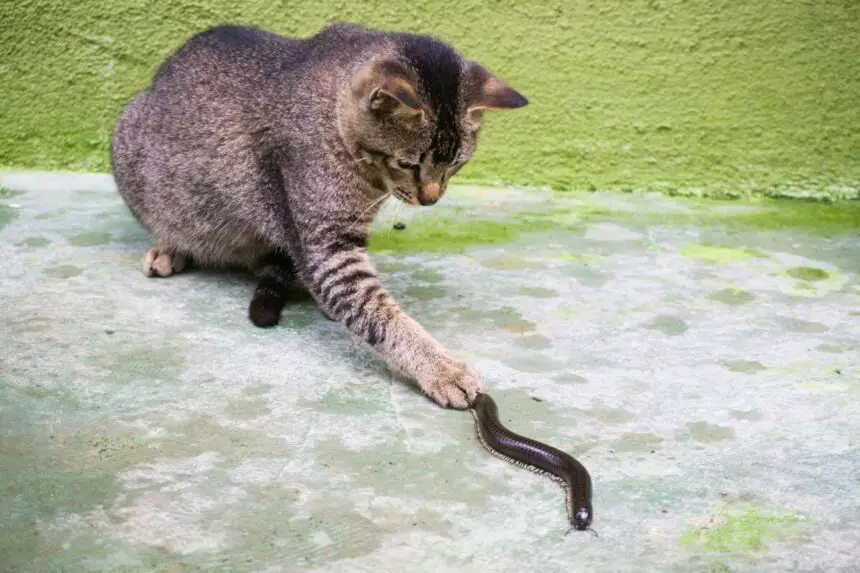Hello to all you cat enthusiasts out there! We’ve each found ourselves in that moment, observing our inquisitive feline pals fearlessly discovering the wonders of the outdoors. But wait a minute, what’s that? A tiny, wriggly creature inching along the path? It’s a millipede! But before you leap into action and scoop up your kitty, let’s dive into the question that’s been nibbling at the back of your mind – are millipedes poisonous to cats?
Unmasking the Millipede: Friend or Foe?
Millipedes, those leggy wonders, are part of the creepy-crawly family. They’re the marathon runners of the insect world with all those legs, but don’t be fooled by their looks – they’re no Olympians when it comes to defending themselves. Now, onto the million-dollar question: Can your curious kitty snack on them without repercussions?
Cat-Millipede Faceoff: What You Need to Know
The Scoop on Millipede Defense
Picture this: your cat paws at a millipede, and what does the millipede do? It’s not like they can roar like a lion or fly away like a bird. Instead, millipedes have a peculiar defense strategy – they secrete some seriously funky stuff! This liquid, let’s call it “Ew-Gross,” can cause irritation if it comes into contact with your cat’s skin. But wait, what if your cat decides to take a taste? Well, that’s where things get a bit more interesting.
Toxic or Just a Tickle?
Millipedes, in their attempt to keep predators at bay, produce a toxic chemical cocktail. But here’s the twist – these chemicals are more like a mild inconvenience than a deadly threat for your feline friend. It’s like a tiny, nonlethal prank on your kitty’s taste buds. Think of it as a splash of hot sauce on your fries – enough to make you cringe but not enough to send you running for the hills.
Symptoms to Watch For
Now, let’s not turn a blind eye to the possibility of some post-millipede interaction drama. If your furball decides to have a taste, you might notice some excessive drooling, pawing at the mouth, or a sudden bout of feline crazy behavior. It’s like your cat suddenly turned into a pint-sized acrobat, doing backflips and somersaults. But fret not, these symptoms usually subside within a short time.
Playing it Safe: What You Can Do
Millipede Prevention 101
An ounce of prevention is worth a pound of cure, they say. If you’re living in a millipede-prone area and want to keep your kitty out of potential mischief, consider taking these steps:
- Garden Patrol: Keep an eye on your garden or backyard. If millipedes are a common sight, a little extra vigilance might be in order. Cats are curious explorers, and those wriggly legs might catch their attention.
- Hide and Seek: Create play zones indoors to keep your fur baby engaged. Interactive toys and climbing structures can keep your cat entertained and less likely to wander into a millipede showdown.
- Gaining knowledge empowers us: Familiarizing yourself with the critters in your area can make a significant difference.
Wrapping it Up
So, there you have it – the scoop on cats and millipedes. While millipedes may have their own quirky defense mechanisms, they’re not exactly toxic titans that’ll send your cat into a tailspin. Sure, a taste might lead to some dramatics, but it’s usually short-lived.
As dedicated guardians of our furry companions, it’s our responsibility to ensure the well-being of our beloved fur babies and shield them from possible bumps in the road like these. Keep an eye on your whiskered buddy, create a fun-filled environment, and arm yourself with a bit of critter knowledge. After all, life’s an adventure, and our feline sidekicks are always up for the ride, millipedes and all!


